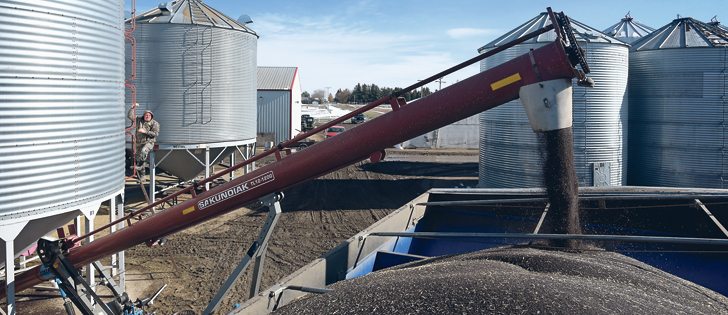A poor quality crop may not be worth spending money to dry, but high quality grain is more marketable if moisture is addressed
The devil won’t be sweating about the grain drying details this winter, but thousands of farmers probably will.
Farmers with millions of tonnes of wet crops in bins must now assess what’s worth drying and selling, what is better to immediately sell and what crops are safe to bin and ignore for a year or two.
For market analyst Neil Town-send of FarmLink Marketing, understanding buyer psychology as it relates to a farmer’s crop is as essential as knowing the specific costs of drying.
Read Also

Organic farmers urged to make better use of trade deals
Organic growers should be singing CUSMA’s praises, according to the Canadian Chamber of Commerce.
“Sometimes the discount (for delivering too-moist grain) doesn’t really make it worth your while to dry it yourself,” said Townsend.
But sometimes farmers will see much more buyer interest if the grain fits their specifications.
The key is understanding if the buyer really wants to buy the crop and is willing to overlook nonessential issues, or if they don’t really want the crop and will buy only it if it is cheap.
In this year’s crop of wildly varying quality, each farmer will have a unique set of circumstances to deal with, Townsend said.
If a crop has multiple problems, such as high fusarium counts, mildew, sprouting and high moisture, it is unlikely to bring better buyer interest if it is dried, while other problems persist.
But if it is a high quality crop in every other way, addressing the moisture might be worth it.
“If you get something dried, you can end up with something that is more desirable, more marketable,” said Townsend.
That all depends on the cost and bother of drying, the shrinkage of the crop from drying, the size of the discount a wetter crop attracts and the increased selling ease.
For a farmer with badly damaged grain, clearing it might be the best option if he has other crops more worth the efforts of careful marketing, said Wild Oats analyst John Duvenaud.
To simplify marketing, it might make sense for farmers to move wet or damaged grain first.
“It’s painful and expensive and a lot of work and no fun at all” to deal with downgraded crop, said Duvenaud.
For crops that might be worth drying, farmers need to understand the costs.
Calculating the various costs can be done with worksheets and programs offered by marketing and production advisers, provincial agriculture departments and farmer organizations.
Farmers can better understand the impact of their decisions by doing the math.
For instance, a 2013 report by the Prairie Agricultural Machinery Institute for Keystone Agricultural Producers noted that about $750 million of crops is lost to spoilage each year due to poor storage.
A 5,000 bushel bin of canola can lose $10,000 to $50,000 from heating and other damage if left wet.
However, over drying canola by two percent will reduce the sale price by two percent, which is also a lot of money.
The math changes depending on whether a farmer owns his own drying equipment or needs to hire somebody to do the drying. The economics of buying new drying equipment to deal with one year of wet crop requires assumptions about future drying needs.
Townsend said he’s heard farmers joke that they just want to sell their crop right away and get into the custom drying business this winter, because that is the only place in which decent profitability looks likely.
















